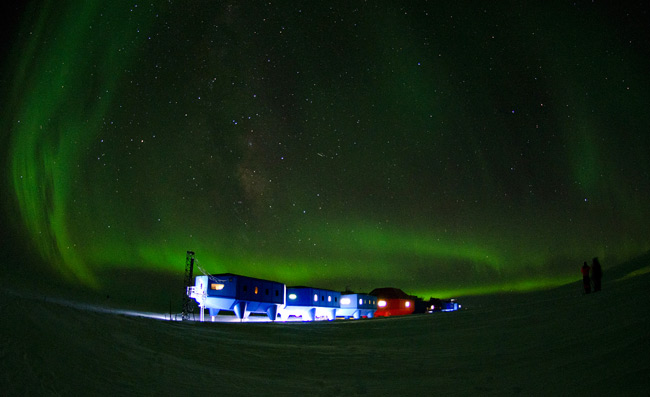LONDON — British researchers have unveiled a futuristic Antarctic research base that can move, sliding across the frozen surface to beat the shifting ice and pounding snow that doomed its predecessors.
The British Antarctic Survey said Wednesday that the Halley VI Research Station is the sixth facility to occupy the site on the Brunt Ice Shelf — a floating sheet of ice about 10 miles from the edge of the South Atlantic.
Most of the previous stations were crushed under the weight of the polar snow, while Halley V had to be abandoned due to fears that the station would be lost if the ice sheet split apart, survey spokesman Paul Seagrove said. He said this fate “illustrates the problem of constructing research stations on moving ice.”
Halley VI, designed by London-based Hugh Broughton Architects, looks like something out of a “Star Wars” movie. The station is composed of a series of four-legged modules linked by enclosed walkways. Triple-glazed windows help trap heat, a vacuum drainage system keeps water consumption down, and the ski-clad stilts keep the units about 13 feet above the level of the ice. If the station needs to be moved, the modules are disconnected and then towed to a new location.
The station was built over four years because engineers could only work for a nine-week period during the Antarctic summer. The total cost of the station was nearly $40 million.
Halley has served as a scientific research site for more than 50 years. The British Antarctic Survey said the region has served as “an important natural laboratory” for studies of the Earth’s magnetic field, its near-space atmosphere, and climate change.
It was data from Halley that led to the survey’s 1985 discovery of the hole in the ozone layer.









